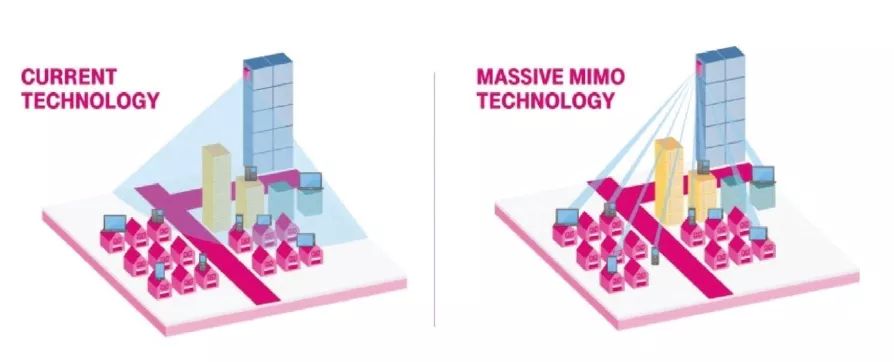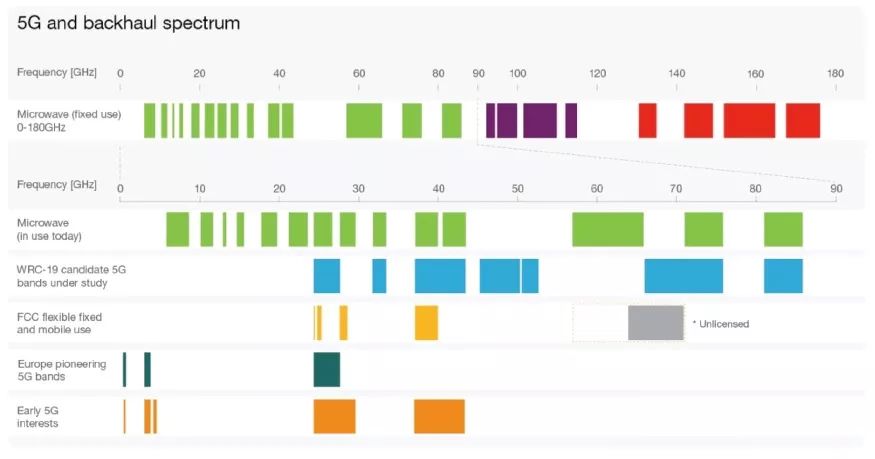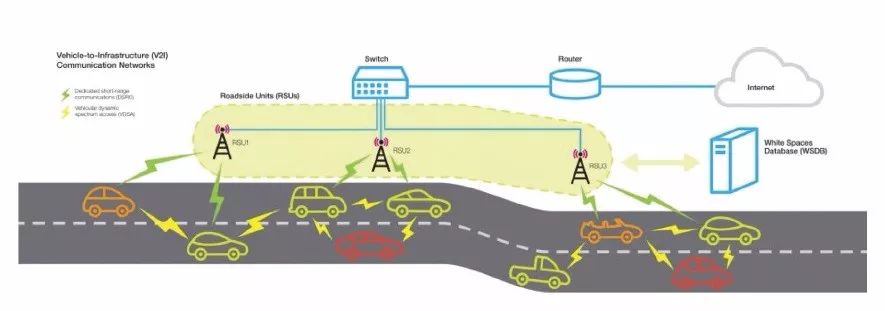MIMO and beamforming analysis of the two most important technologies in 5G wireless technology
For the 2018 5G network, two of the most important wireless technologies - multiple input multiple output and beamforming - have always been important to 5G networks.
MIMO and beamforming
For LTE/4G, the industry is approaching the theoretical limits of time and frequency utilization. The next step in 5G wireless technology is to use spatial dimensions to transmit any given frequency as often as possible by transmitting strictly focused signals in different directions.
The industry still needs to overcome the challenges when using these two technologies for 5G. In 2017, these two themes have been progressing and changing, and you may see more in these two areas in 2018. MIMO describes the aggregation of more and more antennas into increasingly dense arrays at the sender and receiver to create more data stream layers. At the same time, beamforming and techniques closely related to beam tracking are directed to direct each signal to the receiver's optimal path while avoiding signal interference. Beamforming will make MIMO more efficient. However, to be applied to 5G network systems, both technologies need to be further improved.

Figure 1丨5G will rely on an antenna array to provide a large number of inputs and a large number of outputs (or MIMO); beamforming directs signals to specific devices
Physically reducing the antenna size is still difficult; the 5G MIMO array is very large (this is one of the reasons why the actual 5G smart phone is unlikely to come out before 2020, maybe later). Most existing arrays are still too high in power consumption to be completely practical. The essence of beamforming is just as its name suggests, but the term does not imply the complexity involved. In 4G, the transmitter triangulates the receiver; the same is true in 5G, but in 5G, the transmitter will also be able to map the physical environment, and then not only calculate multipath bounce, but also calculate how to stagger the signal stream so as not to interfere Synchronize signals to take advantage of multipathing. The task becomes more difficult when either or both of the transmitter and receiver are moving. All of this is even more difficult due to the additional inherent technical challenges in the next important aspect of 5G wireless. The signal must be guided along two dimensions of height and azimuth, complicating the task of beamforming.
Millimeter Wave (mmWave) The frequency originally allocated for 5G is already crowded at 6GHz. The spectrum most recently allocated to 5G services in different jurisdictions around the world is mostly distributed over the millimeter wave frequencies. The millimeter wave range is from 30G to 300GHz. New 5G spectrum allocations worldwide, ranging from 20 GHz (eg 26 GHz and 28 GHz, they are not technically millimeter-wave, but are usually classified as such), to several frequency bands within 30G to 40 GHz and within 40G to 50 GHz Several frequency bands. There is a 60 GHz Wi-Fi band available for 5G wireless, and other higher frequencies are under consideration.

Figure 3. The spectrum around and within the millimeter-wave range (30-300 GHz) is particularly suitable for higher data rates, but it is attractive despite its flaws.
On the one hand, these higher frequency signals will support much higher data rates than the 5G regulations. In order to improve the spectrum efficiency that it has managed so far, there is still work in the industry. On the other hand, the transmission rate of millimeter wave signals is significantly lower than expected. Millimeter wave signals and signals below 6 GHz cannot pass very far and cannot penetrate obstacles. In general, many components of 5G are still expensive, especially in the millimeter-wave spectrum. As economies of scale pull and based on possible future innovations, further consolidation will certainly reduce costs. In the evolution of the previous wireless network, the basic task was to send data to the mobile phone. Yes, this starts with a simple phone and evolves to increase broadband access; other types of devices are supported by 4G/LTE networks, but the vast majority of wireless networks use to send and receive data to mobile phones, but this will follow Change with 5G.
5G will be the enabling technology for many Internet of Things (IoT) applications, but equally important, these IoT applications will help prove the correctness of the 5G evolution. Use cases including the Internet of Things are actually built into the 5G technology development blueprint, which is inherent in the development of the 5G market. While many IoT devices will connect directly to 5G, others won't. Many IoT applications will rely on a large number of simple, inexpensive sensors or other relatively simple devices. These devices may require low power or ultra-low power, may or may not require low latency, may or may not need to communicate with each other, and the amount of data generated (and possibly received) may vary greatly from device to device. And they may need to be polled in real time, or they may be polled once a day, a week, or even a month.
In many of these applications, 5G connections are not only technically wasteful, but also too expensive, so many of them are not economically viable. This is why the next technical introduction is also very useful for the 5G market. Low-Power Wide Area Network (LPWAN) In many IoT applications, a large number of devices will be connected to the base station through some wireless technology designed specifically for LPWAN, which in turn will connect to high-speed, high-bandwidth networks. The network may be 5G, but not necessarily; 4G connections are sometimes sufficient - sometimes 3G is fine. Wired access is also available nearby, it may be equally useful (if not ideal), but in many places, there is no wired network nearby, which is beneficial for 5G network connections. There are currently several LPWAN options.
They include LoRaWAN, Sigfox, Weightless, NB-IoT, LTE-M, Ingenu, and Symphony Link. The next version of Wi-Fi 802.11ax has a low-power option in the specification, and it is possible to join it. Some LPWAN technologies are proprietary and others are the result of a more inclusive development process that differs in openness. It's still too early to tell which one will become popular, but what is certain is that LPWAN's wireless options are more than the market may have long-term accommodation. Mesh networking In some IoT applications, the use of wireless transmission technology is not only suitable for connecting a large number of simple and inexpensive devices, but also for interconnecting them, which is the world of mesh networks. Some LPWAN technologies did not provide mesh network support at first, but almost all technologies are now available. Mesh networks are not unique to LPWAN and have been incorporated into wireless local area network (WLAN) technology. ZigBee and Thread support mesh technology from the beginning, the latest version of Bluetooth has been added, and the next version of Wi-Fi will also have mesh network technology. The next version of Wi-Fi is called 802.11ax, also called Max (observe "11ax", reverse the first one, it will face the other direction. Do you understand?). Wireless mesh networks can of course be useful in 5G. In all local area networks where the connected devices are stationary, the mesh network cannot be easily completed; considering the moving equipment (walking people, drones, cars), the difficulty is intensified. The industry is beginning to make 5G support the work of mesh networks.

Figure 4. The mesh network will facilitate device interconnection. One possible use is car-to-vehicle (V2V) communication.
USB Printer Cable USB Printer Cord USB 2.0 Type A Male to B Male Scanner Cord High Speed for HP, Canon, Dell, Epson, Lexmark, Xerox and More
USB C Printer Cable USB B to USB C Cable Nylon Braided, 2.0 High-Speed Printer Cord for MacBook Pro/Air, USB C MIDI Cable Compatible for Casio Digital Piano MIDI Controller
Printer cord connects USB-C enabled devices (MacBook Pro, Surface Book 2, Chromebook Pixel. etc) to USB 2.0 Type B devices and peripherals, USB 2.0 B male is Target side, compatible with USB Type B port(Legacy Printers, Multifunction, Laser or Thermal Printer, Desktop Document Scanner, Yamaha Casio Digital Piano, MIDI-Controller, Electric Keyboard, etc.)
USB2.0 High-Speed 480Mbps Transfer: This printer USB B to USB C cable supports High-Speed data transfer/syncing up to 480 Mbps, and is backward compatible with Full Speed USB 1.1 (12 Mbps) and Low-Speed USB 1.0 (1.5 Mbps) standard devices, providing more stable, faster and more secure data transfer than a WIFI connection, improving your work efficiency.
Gold Plated Plug, Stable & Clear Printing: The printer usb c cable is constructed with anti-oxidation high purity copper wire with an increased number of cores and shields and the interface of this USB b to USB c cable uses100% contact gold plating process technology, providing better transmission performance against EMI/RFI noise, enjoy stable and clear printing results. Plug and play, don`t need to install any plugins and check the cable orientation, convenient and fast.
SR Design &10X Durable Cable: UCOAX USB C to USB B printer cable features abrasion-resistant double-braided nylon fiber jacket and aluminum alloy casing to increase corrosion-resistant, passed the printer cable 40,000+ times bend test, making the cable more durable, and sturdier for a longer lifespan, ensuring that customers can achieve the purpose of "NEVER CHANGE THE CABLE"
Wide Compatibility: The USB Type C port Male is Host side, compatible with Dell XPS 13/XPS 15, MacBook Pro, MacBook Air, iMac 2017, iMac ProChromebook Pixel, DELL XPS, HP Spectre, ThinkPad T570, YOGA 900, HUAWEI MateBook and so on. USB B 2.0 port can be compatible with HP Deskjet 2540 / 3630, HP Officejet 5740, HP Envy 4527 / 4520 / 4523 / 5540, Canon MG5750 / MG3550 / MG7550, Epson XP225 / XP245 / XP425, Brother DCP-L2520DW, Lexmark MX310DN, Dell C2665DNF, Samsung Xpress SL-C1860FW, etc.
PROFESSIONAL SUPPORT: UCOAX is a brand that focuses on usb cable. We provide valid technical support for 2 years.
Printer Cable,USB Printer Cable,USB 2.0 Cable,Type A Male to B Male Cord,USB B Cable for HP
UCOAX , https://www.ucoax.com